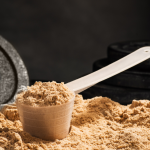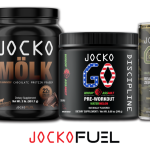Muscle growth is often a goal for people seeking guidance from qualified fitness professionals. Recently, researchers from the University of Cumbria in Lancaster, England, reviewed relevant scientific papers to find best practices for achieving that goal.
The review authors looked at several primary factors associated with muscle hypertrophy: training volume, load, training frequency, training to momentary muscle failure, exercise variation, contraction type, exercise order, repetition tempo, and interest recovery. Here’s a sampling of the conclusions:
Training volume. While results were mixed, the majority of the research suggested that higher training volume—5 sets of an exercise versus 1 or 3, for example—had strong links to hypertrophy.
Load. High-load training (>65% of one-repetition
maximum) is one of the most common muscle growth protocols. However, both high- and low-load training types proved to be effective.
Training frequency. How often a person should train a particular set of muscles depends on experience, the authors found. Experienced athletes may require greater frequency to incite muscle growth compared with untrained individuals.
For most other factors, conclusions were mixed, which adds to the difficulty of creating a solid hypertrophy program when relying solely on research.
“When our principles are purely based on what works for a certain person in regards to programming, we ignore the many other variables that may have also resulted in the extreme hypertrophy the person was able to achieve,” said lead study author, Louis Howe, PhD, lecturer in sports rehabilitation and mechanics at Cumbria.
So what can a fit pro do to create programs that work?
“My primary recommendation is to find out what ‘works’ for the client in front of you and be open-minded in your approach,” Howe told Fitness Journal. “To establish this, you must have a testing battery that provides . . . objective information that allows you to identify whether positive changes are occurring. This may include regularly conducted, relevant strength tests (e.g., 10-RM bench press), anthropometric tests (e.g., weight), and body composition tests (e.g., skinfold measurements). When these are complemented with a well-documented training and nutrition diary, you will be in an ideal position to determine the best approach for the individual client.”


